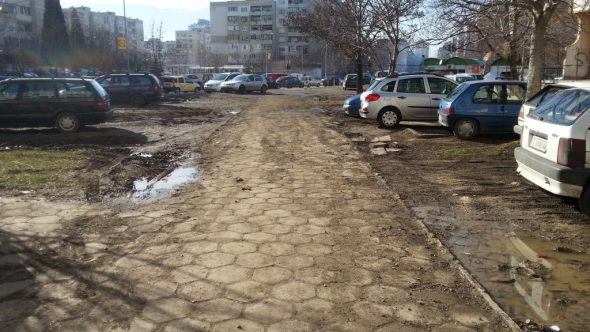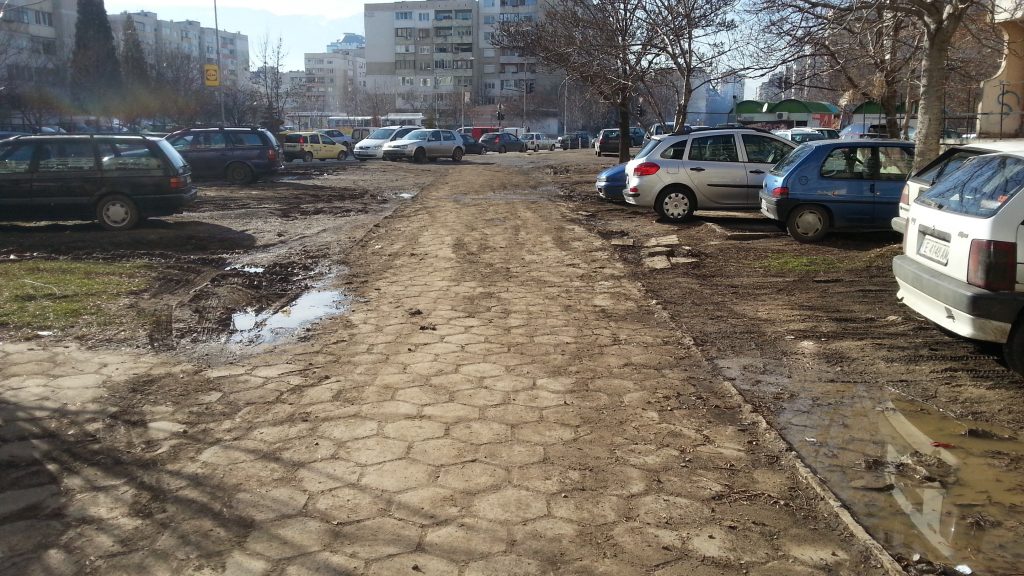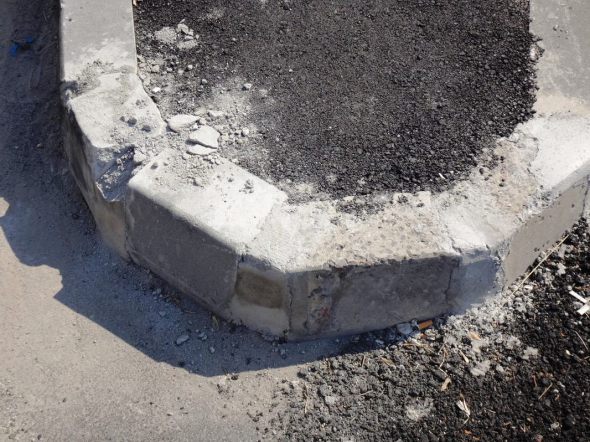| A Foreigners and Friends article |
No, this is not a photo of an abandoned neighborhood in Aleppo or damaged infrastructure after a natural disaster. It’s Mladost, the second largest Sofia quarter, with 102,899 inhabitants, according to the last census in 2011. It might not look that way, but Mladost is actually one of the most cared for neighborhoods in the city. It houses the Business Park and five Metro stations.
Hundreds of millions of Leva have been invested over the last decade, in the development of this residential complex. Not only is the entire neighbourhood decaying, but even new objects show substantial damages, before they are even being inaugurated.
In spring, Mladost turns green, due to its numerous trees. At the same time, there is no green space that is not being turned into a parking lot.
The problem with cars is a pretty complex one. Right, there are not enough parking spaces. Also, parking violations are hardly being penalised. We Bulgarians park all over the sidewalks, in front of entrances and anywhere, including on the greenery. This leads to an aesthetic issue, but also to a lot of damage to the plants we need so much. Sofia is the most polluted city in the European Union, which adds a lot of urgency to protecting the green areas we have.
There are several ways the municipality could choose to resolve those issues: Public transportation should be improved, by adding bus lanes and by reducing the intervals of buses as well as the Metro. Also, parking garages should be constructed and parking violations should be fined. On top of that, the city should start a massive campaign, in order to make people use public transportation instead of their cars.
Sidewalks and streets like Third WorldThe poor condition of most of the sidewalks, which look like they were located in the Third World, has been a chronic problem for decades. As if this issue was not big enough already, newly constructed sidewalks decompose before they are being opened for use, and need an overhaul immediately. A good example is the recently refurbished Boulevard Alekasandar Malinov, where we see several problems:
– Shoddy materials were used. The consequence: Cobbles and curbs are crumbling. An insufficient maintenance adds to that effect. While still under warranty, damages are not being repaired or monitored.
– Sofia Municipality accepts sidewalks which were just built, even though their condition is unacceptable.
– Mladost does not do anything about sidewalks abused as parking lots. These and many other walking areas stir memories of Pripyat, instead of looking like part of a European capital.
The street network in Mladost is also in critical condition. Again, even new sections are damaged and fail quickly, or they show new potholes after the first winter. The city pours huge resources into repairing those by adding faulty patches, which will lead to issues yet again. Heavy traffic and poorly designed pavements make those new objects last for 10 to 15 years only.
The serious issue with the number of cars and the lack of parking spaces is becoming a threat in this city, in which cars are parked on sidewalks, while people walk on the roads. Mladost is not the only quarter with this serious problem. Instead of caring for pedestrians, including handicapped inhabitants, instead of improving public transport and providing spake for bicycles, Sofia Municipality is promoting individual road traffic. Many streets in Sofia, such as Boulevard Skobelev, are captured by cars in their entirety.There are a few good examples in Mladost, which demonstrate how the situation could be improved. E.g. sidewalks protected by bollards are actually being used by pedestrians and therefore returning to their purpose.
The appearance of Mladost is another tragic issue, but it is worth noting that there are many good examples of how to build and maintain a good urban environment. The most famous one is the Business Park in Mladost, a private and closed ecosystem that is well designed and maintained, an urban oasis amidst the devastation in Mladost.Interestingly, many good examples are no longer limited to the Business Park. There are new buildings with a quality infrastructure around them, including sidewalks, stairs, streets, lawns, parks, shafts and so forth. But almost all of those were built by private investors. So, the Municipality’s excuse, according to which there are no good construction companies, is not valid.






